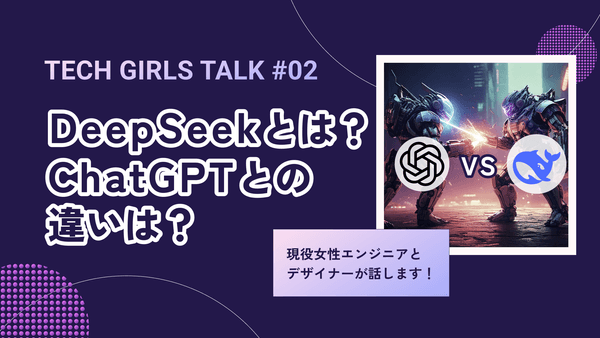DeepSeek Opens New Frontiers in Open Source AI
Unusually for a Chinese company, DeepSeek is open-sourcing AI technology, influencing the international AI competition. This article clearly summarizes the actual benefits, challenges, and future prospects.
3/10/2025

The Challenge of Open Source Innovation in AI: DeepSeek's Growing Presence
Chinese AI company DeepSeek is demonstrating a movement distinctly different from the traditional "proprietary model" centered AI development.
Particularly noteworthy is that the company is actively open-sourcing parts of its AI technology. While many major companies adopt closed strategies, DeepSeek has surprised the industry with its stance of "maximizing transparency whenever possible."
In January, they released the "R1 inference model," which demonstrated performance equivalent to major Western models even on low-cost and fewer GPUs, generating global attention.
More recently, they've published five code repositories, self-described as "small in scale, but progress that emphasizes transparency in development."
These repositories support the infrastructure components of the company's models, based on existing open-source frameworks.
Comment from DeepSeek founder Wenfeng Liang
"There is greater significance in others adopting and developing our innovations than in commercial success.
Open source can be considered a cultural act."
For details and audio interviews, we also cover this in our company podcast.
Why Open Source is Gaining Attention
1. Collaborative Innovation
Arthur Mensch, co-founder of Mistral AI emphasizes that "open source makes it easier for companies to build upon each other's achievements, accelerating breakthroughs."
In contrast, proprietary models tend to keep code and training data closed and contained within the company.
2. Accessibility and Cost Efficiency
According to Richard Gardner, CEO of Modulus, as open-source foundations spread, implementation costs for companies decrease, creating opportunities for many startups.
In fact, DeepSeek surprised the market by developing models comparable to OpenAI and Google with fewer GPU resources.
3. Transparency and Trust
When code and model structures are published, community verification becomes possible.
Meanwhile, Meta's Llama only publishes the model weights while keeping training code and datasets private, making it not "fully open."
DeepSeek is publishing more extensive elements, taking a step ahead in transparency.
Challenges Hidden in Open Source
-
Ambiguity in the Definition of "Open Source"
Amanda Brock of Open UK points out the need for a new framework for AI licensing. DeepSeek is not releasing all of its training data, making "how much to disclose" a focus for the future. -
Securing Competitive Advantage
Even with open source, companies must establish differentiation and business models to survive. While examples like Mistral AI maintain open strategies while raising funds, DeepSeek will likely also explore paths to monetization. -
Security and Responsible Use
While code is widely available, there are risks of misuse. As powerful AI models become accessible to anyone, guidelines and monitoring for responsible operation become essential.
Future Outlook: Proprietary vs Open Source
- Countering Major Closed Strategies
Companies like OpenAI and Anthropic have led with closed approaches. However, as DeepSeek's example shows, the movement to narrow performance gaps through open source is becoming impossible to ignore. - Shift in Competitive Dimensions
If models themselves become commoditized, competition may shift to "implementation know-how," "data quality," and "specialized domain expertise." - Geopolitical Impact
The scenario of a Chinese company leading the world in open source could influence the nature of international AI competition.
Deepening Choices
While complete open-sourcing may seem ideal, not all companies can fully disclose their data and code.
As "partial disclosure" and "phased openness" increase, the degree of transparency each company adopts may become a point of differentiation.
Conclusion: The Questions DeepSeek Raises
Unusually for a Chinese company, DeepSeek's movement to open source AI technology simultaneously reflects:
- The practicality of achieving high performance at low cost
- The benefits of transparency and community collaboration
- And challenges such as securing competitive advantage and security risks
As this trend progresses, while core AI technologies become widely shared, we'll likely see increased demand for new business models and social responsibility. Do you think open source or proprietary models contribute more to innovation? Please share your thoughts in the comments.
References
- DeepSeek Open Sources Code Repository - ITPro, March 2025
- DeepSeek to share some AI model code, doubling down on open source - Reuters, February 2025
- Mistral AI CEO: Open Source Enables Cost-Effective, Powerful AI - PYMNTS, March 2025
- The DeepSeek Revolution: A New Frontier in Open Source AI - Tech Insight Podcast, February 2025



